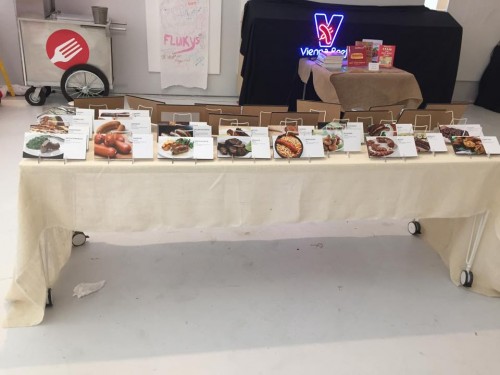
Chicago is one of the biggest cultural metropolises in the United States today. Natives to the city support their renowned sport teams, while tourists flock to view attractions such as the Cloud Gate and Wrigley Field. However, perhaps the most important part of Chicago culture that makes it great is the world-famous food, which is completely specific to the city. From deep dish pizza to the Chicago dog, everyone from around the globe is able to identify the city’s unique foodie culture.
Kyle Joseph, a DePaul alumnus, has created Chicago’s first nonprofit food museum as a tribute to the massive culture behind the food of the city. Located at 109 N. Dearborn St., the Foodseum holds temporary exhibits dedicated to different foods that have been instrumental to the history of Chicago, hoping to inspire visitors to try a hand at cooking or simply just marvel at the food-making process.
“I always wanted to create something where people could discover their passion for food,” Joseph said.
The first exhibit, which opened Sept. 19, features perhaps the most iconic Chicago food: the hot dog.
Joseph said that considering the importance of the hot dog in Chicago history, it was an easy decision to showcase this for the first exhibit.
Upon entering the Foodseum hot dog exhibit, museumgoers can learn about the extensive history of encased meats around the world and in Chicago. After this, they can examine butcher’s tools and even use Play-doh in place of real meat to see how the tools work. There is also a station for smelling different ingredients and spices of hot dogs from around the world. To commemorate the visit, museum visitors can take a picture in a hot dog costume.
“We try to keep it as interactive as possible,” Joseph said. “We know that learning is easier when it’s fun.”
Despite the newness of the exhibit, the Foodseum has been able to garner public attention and draw in many curious Chicagoans. Helene Flynn, a resident of Chicago and a Foodseum volunteer, says that she expects it to be very popular in coming months based on the amount of people who have already shown interest in the project. Many people, including some DePaul hospitality students, have even come to the museum and become inspired to sign up as volunteers after seeing what the Foodseum is all about.
“We are getting a bunch of hospitality students who are volunteering here from the DePaul hospitality school, which has been great,” Joseph said.
The Foodseum staff is already gearing up for the next food that will be showcased after the hot dog: chocolate. Joseph says that this exhibit will be able to incorporate tasting into the experience, which the hot dog exhibit was unable to do, due to the lack of a kitchen in the Foodseum.
“Chocolate, actually and candy, is a big part of Chicago. Few people know that, but there’s a huge history here of chocolate and candy so that’s going to be a really fun one to tell,” Joseph said.
Chicago residents and visitors can head over to the Foodseum and experience the complete history of the hot dog through Dec. 20. After that, the exhibit will switch over to the history of chocolate. The museum is free and open to the public.

